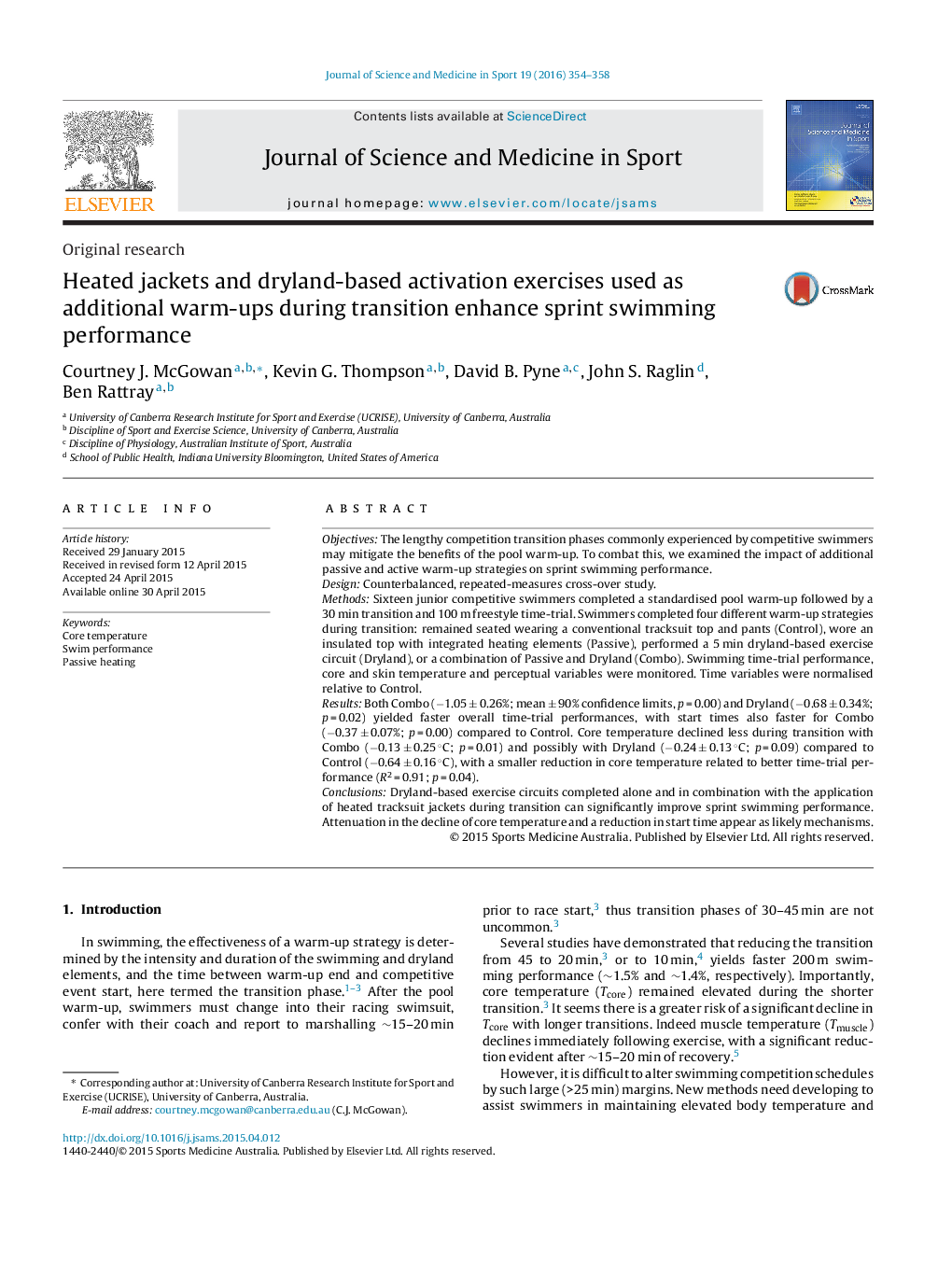| Article ID | Journal | Published Year | Pages | File Type |
|---|---|---|---|---|
| 2707230 | Journal of Science and Medicine in Sport | 2016 | 5 Pages |
ObjectivesThe lengthy competition transition phases commonly experienced by competitive swimmers may mitigate the benefits of the pool warm-up. To combat this, we examined the impact of additional passive and active warm-up strategies on sprint swimming performance.DesignCounterbalanced, repeated-measures cross-over study.MethodsSixteen junior competitive swimmers completed a standardised pool warm-up followed by a 30 min transition and 100 m freestyle time-trial. Swimmers completed four different warm-up strategies during transition: remained seated wearing a conventional tracksuit top and pants (Control), wore an insulated top with integrated heating elements (Passive), performed a 5 min dryland-based exercise circuit (Dryland), or a combination of Passive and Dryland (Combo). Swimming time-trial performance, core and skin temperature and perceptual variables were monitored. Time variables were normalised relative to Control.ResultsBoth Combo (−1.05 ± 0.26%; mean ± 90% confidence limits, p = 0.00) and Dryland (−0.68 ± 0.34%; p = 0.02) yielded faster overall time-trial performances, with start times also faster for Combo (−0.37 ± 0.07%; p = 0.00) compared to Control. Core temperature declined less during transition with Combo (−0.13 ± 0.25 °C; p = 0.01) and possibly with Dryland (−0.24 ± 0.13 °C; p = 0.09) compared to Control (−0.64 ± 0.16 °C), with a smaller reduction in core temperature related to better time-trial performance (R2 = 0.91; p = 0.04).ConclusionsDryland-based exercise circuits completed alone and in combination with the application of heated tracksuit jackets during transition can significantly improve sprint swimming performance. Attenuation in the decline of core temperature and a reduction in start time appear as likely mechanisms.
